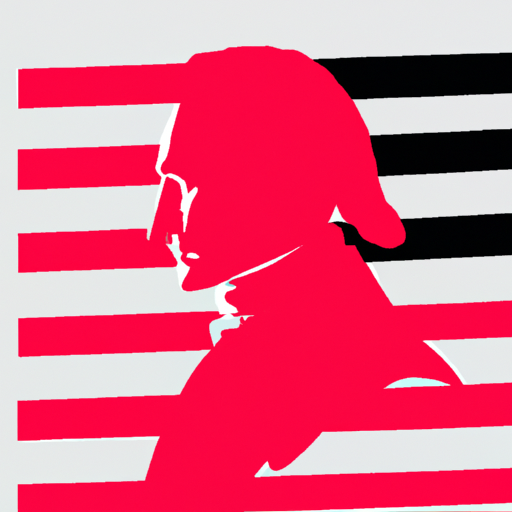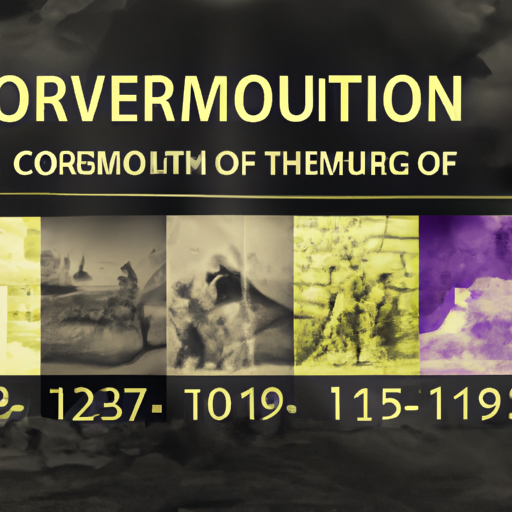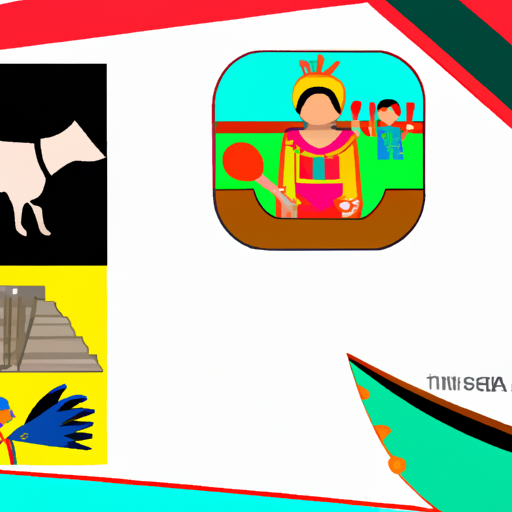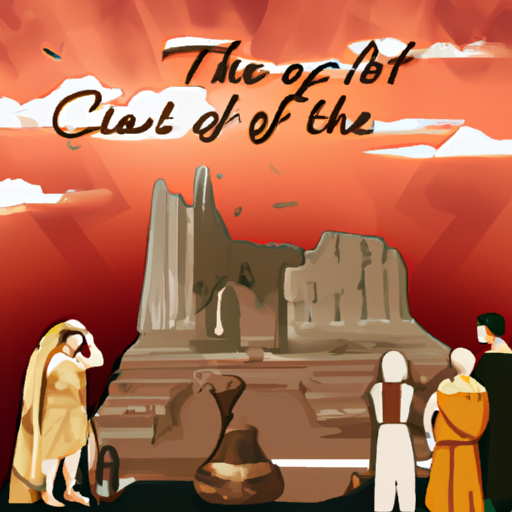History of the Vikings: How It All Ended
Unearth the secrets of the mysterious Vikings, and explore how their tale concluded! Uncovering the past, peering into a time long gone, uncovering what was once forgotten. What mysteries await to be revealed? How did this epic saga come to an end? Delve into the depths of history and uncover the truth behind these legendary warriors. Unravel their story and find out how it all ended!

Mystery and fascination have surrounded the Vikings for centuries, with tales of their remarkable exploits and daring adventures. But what became of them? What event caused the end of this legendary saga? To uncover the answer to these questions, one must delve deep into history and explore the chain of events that led to their downfall. From their first arrival in Europe to the ultimate demise of their culture, this article will uncover how a once-mighty civilization crumbled and what secrets may still remain beneath the waves. Through research, we can learn more about these brave seafarers and appreciate why they left such an enduring legacy. Uncovering the truth behind these legendary warriors will reveal a tale of courage, strength, and resilience even in the face of adversity.
.
Introduction

The Viking Age, a time of exploration and plunder, began in the late 8th century and lasted until the mid-11th century. What caused its disappearance? It’s difficult to pinpoint an exact reason, as it was likely due to a mix of political, economic, religious and social changes taking place throughout Europe.
Politically, Scandinavian countries started unifying in the 10th century with Norway and Denmark at the forefront. This made it more complicated for Vikings to continue raiding other nations without a unified government to back them up. Additionally, some Scandinavian states adopted Christianity which put an end to raids against Christian lands.
Economically speaking, trade routes shifted away from Scandinavia towards other parts of Europe which diminished their ability to make money through trading activities. This meant that less people were interested in participating in raiding expeditions since there was less profit to be made from them.
Religiously speaking, Christianity spread throughout Scandinavia causing many Vikings to leave behind their pagan beliefs and practices. This weakened their cultural identity further contributing to the decline of Viking activity in Europe.
Finally, social changes such as improved farming techniques meant that people had less need for raiding activities as a means of survival. As a result, more people were able to focus on peaceful pursuits like trade or crafts instead of attacking other countries for resources or slaves.
In conclusion, there wasn’t one single event that marked the end of the Viking Age but rather a gradual decrease due to various political, economic, religious and social changes happening during the 11th century.
– Exploring the Historical End of the Viking Age
The end of the Viking Age, a period stretching from 793 AD to 1066 AD, was marked by a number of events that had far-reaching consequences for Europe. In 1066, King Harold II of England defeated an invading army led by Harald Hardrada, King of Norway, at the Battle of Stamford Bridge. This significant victory marked the beginning of the end for the Vikings as a political power in Europe. Subsequently, many returned to their homelands and abandoned their raids on other countries, and with Christianity spreading across Scandinavia during this time period, many converted to the religion which further weakened their political power. The Norman Conquest of England in 1066 then brought about sweeping changes in English society that remain today. Examining this era can give us insight into how powerful forces like religion and politics can shape entire societies over time.
– The Legacy of the Vikings in History
The Vikings, a seafaring folk who roamed and colonized much of Europe, North America, and beyond from the 8th to 11th centuries, are remembered for their boldness and skill in warfare as well as their trading prowess. Their legacy is one that has left an indelible mark on history.
Their mastery of the seas enabled them to traverse vast distances and establish a network of trading posts where goods were exchanged with other cultures. This allowed them to amass wealth and power which served as the basis for many of today’s political systems.
Viking culture also had a lasting effect on language and religion; Norse is still spoken by some people today while Viking gods such as Odin, Thor, Freya, and Loki have been adopted into modern mythology. Notions like Valhalla (the afterlife) have become ingrained in popular culture.
Architecture and art bear witness to the Vikings’ legacy too – structures built during this period remain standing today, including Viking longhouses and churches now visited by tourists worldwide. Artifacts such as jewelry, weapons, coins, pottery, tapestries, carvings – all showcase Viking artistry.
The impact of the Vikings lives on in history books around the world – a testament to their tremendous influence on our world today.
– Debating the Causes of Viking Decline
A period of history that has been much deliberated on by historians, the Viking Age saw a gradual decrease in prevalence. While the exact explanation for this is still up for debate, many scholars point to a concoction of influences. The proliferation of Christianity in Scandinavia had an effect on social and political conventions as well as religious convictions. At the same time, the emergence of powerful states such as England and France made it more difficult for Viking raiders to carry out their activities without consequence. Lastly, advancements in technology like innovations in shipbuilding meant that raids were not as successful as they had been before. All these elements combined to bring about the eventual decline of the Viking Age.
– Examining the Impact of Christianity on Viking Society
The complexity and fascination of Christianity’s effect on Viking life is undeniable. The Vikings, who dominated the North Atlantic from the 8th to 11th centuries, saw their culture drastically altered by this new faith. Religion, politics, art, and daily life were all impacted in some way by Christianity’s emergence.
Religion was changed most significantly; Norse paganism had been the primary belief system prior to Christianity’s arrival. With it came a shift in religious practices and beliefs, including monotheism and original sin. Though aspects of their traditional faith were still maintained, such as veneration of Thor, many embraced Christianity as well.
Politics also underwent a transformation due to Christianity’s influence. King Olaf I declared it the official religion of Norway in 988 AD; this event marked the beginning of centuries-long Christian rule in Scandinavia and brought about sweeping changes to laws and social structure.
Artistic expression also shifted with the introduction of Christianity; artifacts from this era often featured crosses or other religious symbols blended into traditional Norse designs. Literature reflected these changes too; stories featuring Christian characters alongside Norse gods provided both education and entertainment for readers.
Christianity even affected everyday life for Vikings during this period; churches served as places of worship but also gathering spots for people to share news or celebrate special occasions like weddings or funerals. Additionally, Christian holidays such as Easter became popular among Vikings who celebrated them with feasts or other festivities; many Scandinavian countries still observe these celebrations today.
In conclusion, it is clear that Christianity had a profound impact on Viking society when it arrived in Scandinavia during the Middle Ages; its influence can still be seen today in many areas of life.
– Uncovering the Lasting Effects of Viking Rule on Europe’s History
Astonishingly, the sway of Vikings on Europe’s history is still tangible today. From the 8th to 11th centuries, these Norsemen were a formidable power, occupying lands from Russia to France and constructing settlements in Britain and Ireland. Old Norse has bequeathed English with words such as “berserk” and “skald,” while Scandinavian influences can be felt in music, art, literature, and food across Europe. Additionally, Viking-era buildings remain standing in Dublin and parts of England – a testament to their lasting legacy.
conclusion

An enigmatic and tumultuous era of history, the Vikings remain a powerful and influential force that has left an indelible mark on the world. Though their reign eventually came to a close in the mid-11th century, the repercussions of their culture and power are still felt today in myriad ways.
.
Some questions with answers
Q1. How did the Vikings end?
A1. The Viking Age is generally considered to have ended in 1066 with the Battle of Stamford Bridge, when the Norwegian king Harald Hardrada was defeated by King Harold Godwinson of England.
Q2. What were the major events that led to the end of Viking history?
A2. Major events that led to the end of Viking history include Christianization, increased political centralization in Scandinavia, and military defeats at the hands of European powers such as England and France.
Q3. What factors contributed to the decline of Viking power?
A3. Factors that contributed to the decline of Viking power include internal conflicts and civil wars, as well as economic and social changes brought on by Christianization and increased trade with Europe.
Q4. What impact did Christianity have on Viking culture?
A4. Christianity had a significant impact on Viking culture, as it resulted in a shift away from their traditional polytheistic beliefs towards monotheism. It also changed many aspects of their lifestyle, including art, architecture, language, laws, and social structures.
Q5. How has knowledge about Vikings been preserved over time?
A5. Knowledge about Vikings has been preserved through archaeological evidence such as artifacts and ruins, as well as written sources such as sagas and chronicles from medieval times. These sources provide insight into life during this period in European history.




